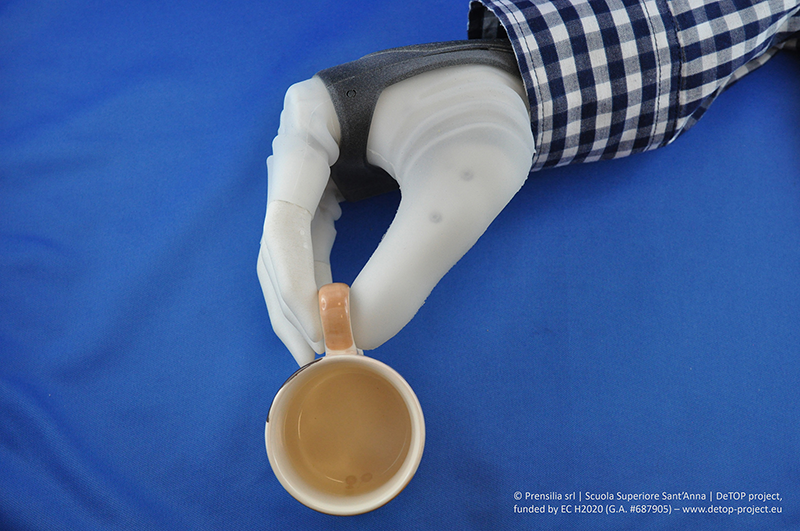A female Swedish patient became the first recipient of an osseo-neuromuscular implant to control a dexterous hand prosthesis. In a pioneering surgery, led by Prof. Rickard Brånemark and Dr. Paolo Sassu, surgeons placed titanium implants in the two forearm bones (radius and ulnar), from which electrodes to nerves and muscle were extended to extract signals to control a robotic hand and to provide tactile sensations. The breakthrough is part of the European project DeTOP (Dexterous Transradial Osseointegrated Prosthesis with neural control and sensory feedback) project, which involved the Chalmers University of Technology in Sweden, Scuola Superiore Sant’Anna in Italy, and Integrum AB, a Swedish firm.
Related Scientists Use Virtual Reality and Neural Stimulation to Help Amputees Use Their Prostheses
A team led by Dr. Max Ortiz Catalan at Integrum AB and Chalmers University of Technology developed this new technology.
In conventional methods, electrodes are placed over the skin to extract control signals from the underlying stump muscles. But these superficial electrodes deliver limited and unreliable signals that only allow movements like opening and closing the hand. More accurate and reliable information can be obtained by implanting electrodes in all remaining muscle in the stump instead. Therefore, the doctors implanted sixteen electrodes into the Swedish woman’s stump to achieve more dexterous control of a novel prosthetic hand, reports Detop.

One of the most important part of this project is that this technology can be used regularly. Integrum AB and Chalmers University of Technology have previously demonstrated that control of a sentient prosthesis in daily life was possible in above-elbow amputees using similar technology.
“Several advanced prosthetic technologies have been reported in the last decade, but unfortunately they have remained as research concepts used only for short periods of time in controlled environments,” said Dr. Catalan, who also heads the Biomechatronics and Neurorehabilitation Lab at Chalmers University. “The breakthrough of our technology consists of enabling patients to use implanted neuromuscular interfaces to control their prosthesis while perceiving sensations where it matters for them, in their daily life.”
Related Electronic Skin for Prosthetic Hands Lets Amputees Feel Pain
The patient with the new implant is learning how to control it using virtual reality. She will have to spend some time becoming comfortable with controlling the device. Two more patients will be implanted with this new generation of prosthetic hands in the coming months, in Italy and Sweden.












